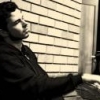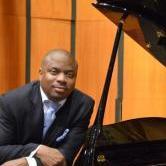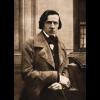Search the Community
Showing results for tags 'music'.
-
I apologize in advance for not knowing the technical slander in english. In medieval music, did they use modulation and "sensitive notes"? (These are the ones a semitone under the note that defines the key... don't know the word for this either)
-
So I'm writing this atonal piece for choir, are there any rules regarding accidentals?
- 11 replies
-
- atonal
- accidentals
-
(and 2 more)
Tagged with:
-
Hi guys, Mostly for fun, I recently finished a short album of tracks that are...not quite like what I'm usually doing. It was a lot of fun and I expect to be doing more work like this in the near future, but for now I just wanted to share a link to the material if you want to hear something neat: http://snd.sc/HZ6aWP Share & enjoy!
-
Looking forward to listening to the wealth of music here. Toby
-
- alternative
- music
- (and 4 more)
-
Really need a moving piece for my leavers assembly. I have lyrics, anyone write music? Please help! Will make it worth your while :) Email 07rebeccalancashire@longdean.herts.sch.uk
- 2 replies
-
- composition
- help
-
(and 2 more)
Tagged with:
-
Please take the question in a broad sense. I am not just asking why you yourself compose. Try to be philosophical and consider for a moment what might the role and function of musical composition be for humanity, what its goal or purpose could be. Is it the same as the goal of all art or different from that of other arts? What exactly is happening in the creation of a piece of music? To make the question even broader, one might ask "what is the goal of music?"
-
Most of my music seems clearly divided into 4-bar sections or thoughts of reliable regularity that follow one another rather than truly proceeding from one another, or merging into one another as great music I have come to believe should. I am seeing this as a shortness of the span of my musical thought. If so, is that a weakness and should one seek to remedy it? Indeed, can it be remedied or is it rather a reflection of one's maturity and life experience that can only be changed through developing maturity as a person first and only then as a composer?
-
I know so many contemporary composers who wish they could write something like this!
-
Hi guys! I heard about a software called 'Juke-bot' that generates music automatically by analyzing images... It scares me! Did someone tried it online? (www.juke-bot.com )Did you already get the result?
-
This may sound like a morbid question, and I apologize if it offends anyone here, but.. we've all seen EKGs and have heard the sounds they make when showing the heartbeat. Does anyone know at what pitch the 'flatline' is at? I've tried googling, but can't find it.
-
x
-
Hi everybody! I am an artist, doing animated films. For my latest project, Georgie the Cat, I am looking for a musician who feels like collaborating with me, by providing the music / soundtrack. Georgie is intended to become a series of mini-clips with little, cute stories of Georgie the black kitten. These clips are suited even for the smallest children. Here is the very first clip, that needs music: http://vimeo.com/31328053 The film needs an intro-theme that is played during the opening panel. The same intro music will be played at the beginning of every future clip. Then it needs music while the action plays, especially at the end of the action, it will need flute music (when Georgie plays the flute) and at the end, it needs music for the end-credits. The music shall be lovely, melodic, fairy-tale like and if possible not synthesizer like. More classic. for now this project is a non-commercial one, I will see how far we can go with it. But if we get enough clips together, I may produce a DVD. I already did one: www.john-f-kennedy.fr/bete I will gladly answer every question you may have. Diana
- 4 replies
-
- soundtrack
- film
-
(and 1 more)
Tagged with:
-
Hi! I'm new to this forum so I'm not quite sure if I'm posting in the right section here. Forgive me if it's the wrong one. I am trying to find out what kind percussion is being used in this clip @ 2:41 It's really a type of sound that is used in a lot of horror movies (and action/thrillers too). I heard it a lot of times. It is used in the movie "Valentine". You can hear it at 2:41 in this clip which is from the film itself. Link to Valentine clip: I'm not talking about the timpani heavy drum, but the intense short and loud metallic kind of sound on top of it with the reverb. It's a strong kind of sound and it reminds me of a metallic pipe being hit against a floor or something like that. Perfect for horror and thriller score. Another example is from Aliens (1986) in the piece "Bishop's Countdown". In this example you can hear it already from the very start of the clip. It's less pronounced but this time it appears more often than in the first clip. You can hear it as a part of the general percussion. Link to Aliens clip: http://www.youtube.c...h?v=f2XHvi4EzCw The reason I'm looking for this is because I plan to use this sound in one of my own compositions/mix. Does anyone know what kind of percussion this is? And I would also be interested in finding a sample library that contains this sort of sound, if there is one. I hope someone can help me on this! Ole
- 3 replies
-
- percussion
- film
-
(and 3 more)
Tagged with:
-
Hello. I just thought I might share with you guys on YC the blog of my hero and mentor, the Australian conductor/composition teacher/music educator Richard Gill: http://richardgill.blogspot.com/
-
- conducting
- music
-
(and 2 more)
Tagged with:
-
Recently on YC I have been turning out to be a bit of a grumpy old man with my negative posts on Yanni etc. (I read a review on one of Yanni's CDs, the reviewer said it sounded like it would 'ooze out of the walls of the elevators descending into hell'), so I decided to be a bit more positive from now on starting with this post. It is the first thread in this series about our favourite music of the twentieth and twenty-first century. The reason why I chose this era in music is because of the huge amount of diversity when it comes to musical styles. There are so many different types of music now that I'm sure we will discover new compositions and composers that we haven't previously heard of. Anyway this decade (1900-1909) produced some revolutionary ideas by composers looking for new ways of writing music. One of the most famous (and one of my favourite) events was when Schönberg premiered his second string quartet (composed around 1908 I think). The quartet was the first time anyone had bent the rules of dissonance until they actually snapped. The last movement, in addition to being atonal (or pan-tonal, as Schönberg preferred to describe it, saying that it was 'The synthesis of all tonalities'), it was the first to include voices in a form previously meant to be a purely instrumental work with strict instrumentation of two violins, a viola and a cello. An article about the premiere of Schönberg's revolutionary masterpiece appeared in the crime section of the newspaper.
- 11 replies
-
I was reading an article ages ago on some classical music and arts website about some of the author's music that they would never want to hear again. I can't remember what all the pieces they wrote about but I am pretty sure Für Elise was on the list. Any way the music I would like never to hear again would be any of the boring as hell elevator Muzak by the Greek composer Yanni. I read in a review of one of his CD's that his music would 'ooze out of the walls of elevators descending into hell.' I heard some of his Muzak on YouTube and I think I am scarred for life with the sound of his pop classical rubbish. Now I would like to hear from all you guys on what music (or Muzak) you would never want to hear again. I also do not want to hear the famous Scène from Swan Lake. I think that the melodic structure is very bland and the use of chords is extremely predictable.
-
So we've talked about jobs and we've talked about school? What else is there? Networking! Be nice to people. Go to concerts. Trust me, if they are in this business, you'll need them (AND I DO MEAN TRUST ME) LISTEN/BE HUMBLE This right here is kryptonite to most people. When people critique your work, listen to what they have to say. It might actually help. ASK for help. You are not Mozart. And even if you are, he still took lessons. It is well documented how other composers listened and critique each others work. TYPESETTING (sigh) I sit here in reminiscing of hearing gorgeous musician that was an eyesore. 1) Make sure your parts are correct. 2) "Just because you heard it that way" doesn't mean you have to write it that way. Yeah, Grainger did it, but most people realize how a pain that movement of Lincolnshire Posy is. 4+ 3 + 2+5+7 + 3= six bars of 4/4. You don't have to be difficult. 3) Make sure your parts are correct 4) Realize that a lot of times you'll only get one rehearsal 5) Make sure your parts are correct 6) Make sure your parts are correct 7) In case you forgot, make sure your parts are correct Contests Contest are fun but I strongly disagree writing for a competition. The resentment that might come later is not worth it (Make sure your parts are correct) Marketing Get a website and market yourself. Have music ready to be read online and for listening (Make sure your parts are correct.) Have an email address that's for branding (i.e. chad@sirwickentertainment.com.) Have a calender of your performances ready. (Make sure your parts are correct) Hope this helps!! Much Love and Musically Yours, Chad "Sir Wick" Hughes PS: I'm off to make sure my parts are correct.
- 8 replies
-
- jobs
- commissions
-
(and 2 more)
Tagged with:
-
Greetings to all fellow composers! For some bizarre and peculiar reason, we are living in an age where people are becoming obsessed with thinking that we have to label every single compositional style that composers write in. I was reading a book by the australian composer Andrew Ford (it was called "Illegal Harmonies") about modern music since 1900 and I was amazed to see that the glossary of musical styles (Impressionism, futurism etc.) went on for about 50 pages! I don't really see the need to label music in this way as the words hardly help anyone just listen to the music and the sounds created.In my opinion, all of these words that we apply to different styles of modern classical music are absolutely meaningless. To show you what I mean I'll use the labels "Impressionism" and "minimalism" as examples. Impressionism is a word used when describing the style of painting that was around in France in the late 1800s and early 1900s. This style was influenced by the effect that light had on certain objects and places; often artists would paint the same object/landscape with different lightings to create very different images (Monet has done some good examples of this). Now, what musicologists and whatever have done with this word is this: they have used it to describe the music by the French composers Debussy, Ravel, Satie and several others. The thing that doesn't make sense is that in order to make the music go with this label means that he music has to take the features of impressionist painting (the effect of light on objects and places) and apply them to the music (which would therefore sound completely different). Even thought Debussy has written music that happens to have titles that you would imagine you'd find on a painting by Monet (e.g 'The Sunken Cathedral') it techincally is NOT genuine impressionism. In the long run, Debussy hated the term anyway. Minimalism is a term that is used to describe the fine arts that has very little or no diversity when it comes to the art elements (colour, shape, form, tone, line, space and texture). Musicologists have taken this word and stupidly applied it to the music of composers such as Philip Glass and John Adams. A lot of the works by these so called "minimalist" composers are bursting with colour and harmonies that you would not expect from an artist like Carl Andre. The only thing that someone would say that is "minimal" about their music is the lack of motific development. If I let a six-year-old listen to the first movement of Glass' first violin concerto or Adams' "A Short Ride In A Fast Machine" and asked them to describe the music they just heard, the word "minimal" would pretty much definitely not occur. In the long run, Glass and Adams (just like Debussy with "impressionism") they hated the term anyway.
-
link del post en taringa: http://www.taringa.n...237/Chopin.html Federico Chopin http://2.bp.blogspot...1600/Chopin.png Uno de los mejores compositores lejos... Nadie puede compararse en tecnica compositiva, pero sobre todo en esa cosa muy dificil de explicar, esa pasion en cada compás. Hola, hace varios meses vengo trabajando en un projecto que empeze yo mismo, yo tengo 15 años, y quiero ser compositor. Toco el piano, y estoy aprendiendo música, para a los 18 ir a Polonia a estudiar composicion en el conservatorio. Yo tambien compongo , pero no puedo decir que soy chopin, todavia me falta aprender bastante. Para la poca gente que le interesa la música de este genio, aqui les dejo una ayuda para componer en su estilo. Por ultimo una pequeña reflexión personal: Es muy facil realizar un cálculo matemático, pero crear un buen compás de música es el mayor desafio que puede existir. Estilo musical de Chopin 1) El secreto de la composición es siempre variar las ideas y usar toda variante hasta que quede la frase deseada. Por ejemplo si estamos “trabados” en alguna frase y no sabemos como seguir podemos, tomar un papel y escribir distintas maneras para seguir, todas diferentes, y elegir la que mejor quede, este modo se llama descarte. 2) Se pueden crear todos los recursos compositivos imaginables. Esto quiere decir que no siempre la musica debe ser todo el tiempo “igual” , por ejemplo, en la clave de sol, la melodia, y en la clave de fa, primero la nota del bajo y luego el acorde. Sino que hay millones de formas infinitas de escribir la musica, para que no sea tediosa, un ejemplo muy claro seria el siguiente: Rondo op 1 , Frederic Chopin: http://a8.sphotos.ak...1_5082526_n.jpg En los primeros cuatro compases, marcados en rojo , hay una forma de expresar la melodia totalmente distinta a la parte azul. En la roja se muestra por octavas, Y en la azul se muestra como anteriormente dije, melodia y bajo/acorde. Luego esto CAMBIARÁ para que no sea tan tedioso escuchar toda la pieza igual: http://a1.sphotos.ak...6_6782487_n.jpg La parte azul se mantiene hasta que en un momento vuelve a la forma roja, parecida a la del comienzo pero una Melodia distinta. Es cuando entonces llega la parte verde. Cambia totalmente la forma de la melodia y el bajo, se puede apreciar que es totalmente distinta a las dos anteriores. Eso es lo que Chopin buscaba, que la pieza no sea siempre igual o tediosa y para esto hay un monton mas de recursos, porque como se puede apreciar sigue estando en el mismo tono. Luego si cambiara de tono, pero estando en el mismo hay muchos recursos que uno puede INVENTAR, para seguir la obra. 3) El fraseo y la “cantabilidad” son los elementos principales y característicos en la música de Chopin. Quiere decir que la melodía debe poder ser cantada. Otro de los aspectos fundamentales es el empleo de un rubato muy característico de este compositor: el rubato reservado para la melodía; una melodía entendida como foco de atención, que se desarrolla con independencia respecto al acompañamiento. 4) En Chopin es particular el salto de séptima. Hacia arriba o abajo. Pero nunca resuelve este en la tónica sino que genera una frase. Este salto puede ser de 7 pero de dos octavas como en el último ejemplo y tambien de novena, etc. http://a5.sphotos.ak...0_1862014_n.jpg Nocturno en sol menor. Fa mayor resuelve en sib. http://a1.sphotos.ak...2_1654454_n.jpg http://a7.sphotos.ak...3_7538395_n.jpg 5) También los cromatismos. Antes de regresar a la tónica en el quinto grado en este ejemplo: http://a7.sphotos.ak...8_4107254_n.jpg Y en el juego en una nota con otras cercanas. http://a2.sphotos.ak...1_1772111_n.jpg 6) También repite notas rápidamente para acentuar. Esto es característico en su estilo. http://a6.sphotos.ak...3_4717794_n.jpg 7) A veces cuando esta en un quinto grado puede repetir la frase dos veces. Una terminando en un tono mayor y seguido de eso una terminando en un tono menor. 8) Chopin siempre agrega notas de paso para que el sonido no quede tan cuadrado. Es muy importante para la melodia el uso de notas de paso http://a7.sphotos.ak...4_1190061_n.jpg 9) El estilo de Chopin presenta muchas células de este tipo, Son muy caracteristicas del folclora polaco, de la mazurka etc: http://a5.sphotos.ak...7_4299137_n.jpg 10) Chopin generalmente no va demasiado grave en la armonía. No mas de 2 octavas abajo del do central pero hay momentos en que deja pasar esto. Tambien logre observar que el quinto grado es el unico que deja el bajo ir mas grave que al tonica, los demas grados ubica su bajo mas arriba que el de la tonica. 11)Se observa además sobre el cromatismo la misma nota pulsada varias veces comenzando desde la octava. Esto se llama nota pedal o al revés desde arriba. También no tiene que ser siempre cromatismo pueden ser notas de la escalas etc. http://a6.sphotos.ak...8_7018497_n.jpg 12) El Mazur danza típica del sureste, (danza en tres tiempos (3/4) con acentos en el la melodia en el segundo y el tercer tiempo) se caracteriza por su paso deslizado, con ritmo punteado, Esta manera de componer la encontramos en sus valses, canciones, el Concierto en fa menor, la Fantasía núm. 13 y en sus 58 mazurcas. 13) Acorde disminuido muy característico en muchas composiciones de Chopin. Les da su toque armónico. Resuelve en el tono mayor del mismo acorde. http://a4.sphotos.ak...9_1994312_n.jpg 14) Las estructuras de los conciertos de chopin siguieron el ejemplo de los conciertos en el estilo de Jan Ladislav Dussek y Johann Nepomuk Hummel, con la que estaba familiarizado. Él estaba interesado en el diálogo de Beethoven entre los instrumentos, la orquesta y el solista, en un entrelazamiento de voces como hacía weber . Una importancia destacada es la visualización de las habilidades expresivas y técnicas del solista en los conciertos de Chopin. El primer movimiento del Concierto en Mi menor tiene tres temas, que son introducidos por la orquesta. El piano juega con el primer tema (compas 139), seguido por el segundo tema lírico (compas 155), acompañado por el motivo principal del primer tema en contrapunto del bajo. 15) Chopin añade muchas notas de paso y cromatismos cuando tiene que desarrollar un tema como por ej en el nocturno op 9 no 1. http://a7.sphotos.ak...0_3198958_n.jpg 16) Así como en las composiciones se pueden usar notas de paso también se pueden usar acordes de paso. Se puede sostener una misma nota con la mano derecha y cambiar de acordes con la izq., pasar por distintos y viceversa, con la nota suspendida en la izq. También pueden ser dos notas o más suspendidas. 17) Se pueden hacer escalas de más de una nota a la vez, por ej: de triadas o de dos notas a la vez.. 18) Usar distintos bajos con el mismo acorde. O el mismo bajo con distinto acordes, por ejemplo el bajo sol, con el acorde sol menor o do menor. Es un recurso si no hay espacio en el compás o puede usarse en toda la obra. 19) Si se quieren escribir acordes cromáticos se pueden usar inversiones de otros que queden cercanas al acorde de donde se está. 20) A veces se puede transportar a una misma frase a otro tono, esto sería como repetirla pero un poco mas aguda. Por ej: si se esta en do menor se puede tocar la misma frase en fa menor luego. Mirar rondo op 1. 21) Todo se puede hacer en una composición lo mas importante es recordar que aunque se piense que algo es absurdo se puede convertir en algo muy bello si lo armamos adecuadamente. 22) Finalizar una idea con esta célula da una sensación de acabada. Este acabado se ve en muchas obras de bach, y además de en el rondo op 1 de Chopin. http://a1.sphotos.ak...31_445172_n.jpg 23) También se pueden usar acordes arpegiados rápido sin el bajo para no ser tan repetitivo. 24) En Chopin hay algo de contrapunto escondido en las partes rápidas con las dos voces interiores. A veces las voces exteriores hacen movimiento contrario, una escala va hacia arriba y la otra hacia abajo. 25)Para el comienzo de la obra por ej si es anacrúsico se puede tocar una nota y sostenerla tocar el bajo y que la nota sigua sonando como en el principio de la mazurca op 6 no 1 de Chopin. 26)A veces para pasar de un tema a un tema b Chopin lo hace mediante una nota de paso cromática. Por eso cuando termina el tema a deja la última nota a distancia de un tono de la nota principal del tema b para pasar mediante una nota cromática. Mirar mazurca op 6 no 2. 27) Cromatismo abierto: Muy característico en el romanticismo y en la música de Chopin. http://a5.sphotos.ak...3_5752698_n.jpg No tiene que ser si o si a la octava sino que puede ser de otros intervalos. Vals op 64 no 1. 28)Los estudios de Chopin son ricos en armonía y se puede usar para aprender. Observar estudio op 10 no 11. 29) Es muy característico del romanticismo tocar un acorde de nuevo y cambiar algunas notas del acorde cromáticamente o simple mente moviendolas para dar una sensación de aumentación o otras. Se puede además empezar de uno aumentado a uno de reposo como en el principio de la balada no 3. http://a2.sphotos.ak...35_536528_n.jpg 30) También además de cambiar algunas notas otro recurso sería mover la armonia cromáticamente. Vals op 34 no 1. http://a4.sphotos.ak...6_8176211_n.jpg 31) Estos saltos son muy característicos en Chopin cuando quiere darle fuerza: http://a3.sphotos.ak...9_5053670_n.jpg 32) Cadencia con progresión: Muy característica en Chopin. http://a4.sphotos.ak...3_6813908_n.jpg 33) Cromatismo en el bajo: las demas notas quedan iguales. http://a1.sphotos.ak...4_1518347_n.jpg 34) Balada no 3. http://a3.sphotos.ak...47_521089_n.jpg Progresión muy característica en muchas composiciones de Chopin. Apoyaturas en el bajo si y re, progresión VI – I 35) El cantabile de Chopin demuestra sus apoyaturas cromáticas que le dan su estilo melódico. 36) Como recurso melódico se puede emplear lo siguiente con notas del acorde en la voz interna y cromatismos en la voz superior: Las notas del acorde están marcadas. http://a6.sphotos.ak...9_1295904_n.jpg 37) En esta cadencia Chopin abre el acorde de dominante y luego resuelve distinto porque hace sonar el acorde de tónica más suave. Estos arpegios son característicos de él. http://a5.sphotos.ak...2_3843680_n.jpg 38)Un recurso que Chopin utiliza al terminar una obra es repetir muchas veces el mismo compás con el mismo bajo. Esto da una sensación como que el sonido se va alejando, por eso esta indicado perdendosi y va cada vez más suave. Mazurka op 24 no 3. http://a3.sphotos.ak...3_5625677_n.jpg 39)Chopin a veces utiliza notas muy cercanas como nota pedal en las mazurcas. http://a3.sphotos.ak...8_4812642_n.jpg 40)Sus mazurcas se caracterizan por tener una pequeña sección armonica-cromática, en algunos compases. http://a5.sphotos.ak...9_3749898_n.jpg 41) Aca un ejemplo de cómo usa muchas veces el mismo acorde en el bajo, pero con notas distintas en la voz superior. Esto no lo hace durar mucho, sino seria muy monótono. http://a4.sphotos.ak...0_3212709_n.jpg 42) Un recurso para que nuestra composición quede bien sería agregar una escala rápida en algun momento, ya que las partes rápidas vuelven a llamar la atención del que escucha.
- 9 replies
-
- 1
-

-
- chopin
- composition
-
(and 2 more)
Tagged with:
-
Hey all, So I'm on my last year or so of undergrad school, and that means that I'll be going through the the senior courses (no more 4 hour classes!), revamping resumes, my portfolio and expanding my internet presence. I'll also be proposing my (50's suspense music here) SENIOR PROJECT! In all seriousness though, i'm really excited! I've been looking forward to getting out there and starting to work with people in the real world. But enough of my ranting, time to present you guys with my proposal for my senior project! - A working VSI with the intent on it being useable in real world mock - ups. But before I really get my hands dirty: I wanted to hear from you guys and get the YC community involved with this project. I think this would be a really cool project to hear from other people and really to network with all of you guys; many of us will be working in the same industry more or less (some of us are already making their name out there) and it would be great to get feedback from peers in the composition community. I don't expect this to be the next cinesamples, but I do intend on getting to know those guys and other companies that create this software and be able to create my own custom instrument libraries in the future. Basically I wanna know: What UI options do you think are "essential" to make a user - friendly patch? What other software instrument would you like to see come out? What are some problems that you have sometimes with VSI's? Anything else that comes to mind :) The short version of my proposal is that I'm going to make a sort of "Scary String" library using some common effects used in commercial orchestral music and some extended string articulations. If you're interested in reading more, I've opened up my Prezi presentation online, the link is below. http://prezi.com/vjt...oject-proposal/ I look forward to hearing from everyone! Happy composing! ~J
-
Maybe this is not the right place to ask this, because everyone here is a musician, but how do non-musicians listen to music? Do they really hear the accompaniment or do they only listen to the melody, what do they notice and what not, etc. The only things I have read before were the articles about song writing (how to make your song popular).
-
Hello from Red Scarf Classical! For anyone interested, there is a new composers competition open. It's open to anyone and we have some exciting judges and cash prizes. It is a great way to receive more recognition as a composer and every single entry will receive feedback from the panel of judges. I look forward to hearing all your entries! For more information and to enter, visit http://www.redscarfclassical.com All the best! Greg
- 1 reply
-
- competition
- music
-
(and 1 more)
Tagged with:








